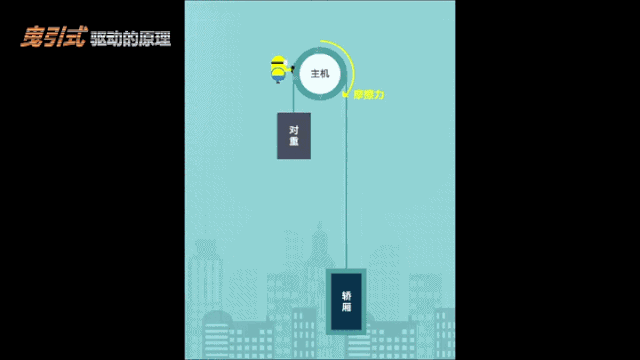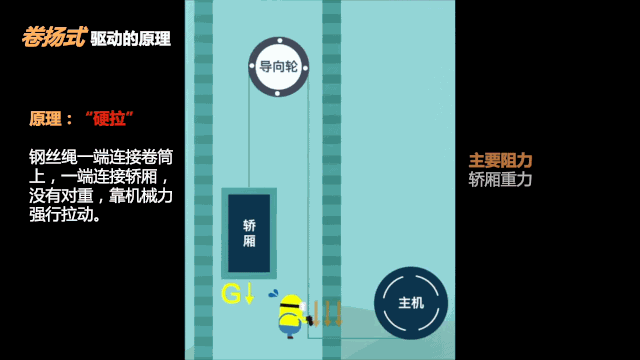2024-02-02
How to choose a suitable home elevator for oneself
With the continuous development and progress of society, and the continuous improvement of people's living standards, elevators have gradually entered the homes of ordinary people. Nowadays, our awareness of energy conservation and environmental protection is constantly increasing. How should we choose more energy-efficient, environmentally friendly, safer, and smarter home elevator products in our daily lives? Below, by analyzing various types of products for household elevators, we will help everyone understand how to choose the one that suits them.

The UNIFUJI Home Elevator's simple and dignified appearance, rich in texture, creates an appropriate personalized aesthetic, interprets the dynamic space of light and shadow, redefines the enjoyment of riding the elevator, and brings more excitement!
1. Traction type household elevator
Traction elevators are currently the most commonly used elevator driving method, and almost all of the elevators we use are traction elevators, accounting for more than 90% of the elevators in use worldwide. Simply put, a traction elevator is an elevator with a counterweight, where the car and counterweight move relative to each other. Advantages: Good safety, smooth and comfortable operation, and fast speed. Widely applied in the market, mature in technology, low in energy consumption, and priced lower than elevators driven by other methods.
The working principle of a traction type household elevator: There is a driving motor (traction machine) at the top of the shaft, and there is a car and counterweight in the shaft. The car and counterweight are connected by a steel wire rope and run up and down through the traction machine. The principle is similar to the seesaw that children play with. The rated power of a 320kg load capacity household elevator traction machine is about 0.9kw/h, and the rated power of a 400kg load capacity household elevator traction machine is about 1.1kw/h. This type of energy consumption is also the most energy-saving and environmentally friendly among all types of household elevators. Its power consumption is similar to that of a large refrigerator at home, which is very energy-saving.

2. Strong drive household elevator
The working principle of a strong drive household elevator is similar to the common winch, where one end of the steel wire rope is connected to the drum and the other end is connected to the elevator car, without counterweight, and is forcibly pulled by mechanical force. Advantages: Suitable for small shafts. Disadvantages: Low running speed, about 0.3 meters per second; High noise level; The drum and steel wire rope are severely worn; High energy consumption. The main unit of a strong drive household elevator can be placed at the top or bottom according to the height of the building, and the elevator can run up and down through guide wheels. At present, the rated power of the energy-saving strong drive household elevator is about 4kw/h.

3. Hydraulic household elevator
The working principle of a hydraulic household elevator is to drive the up and down of the elevator car through a hydraulic top rod. Currently, there is a problem that cannot be solved with such elevators, which is that oil leakage may occur after prolonged use. The power of a hydraulic household elevator is approximately 3.5kw/h. Advantages: Low requirements for shafts and pits. Disadvantages: Slow running speed, within 0.3 meters per second; Unstable start; Oil leakage hazards; High operating noise; The hydraulic oil expands and contracts due to the influence of temperature, directly affecting the comfort of operation; If the parking time is too long, there will be a level drop, and the elevator will sink and the floor will be uneven; High maintenance costs and frequent maintenance. Hydraulic elevators have basically withdrawn from the market due to defects such as oil leakage.

4. Screw type household elevator
The structure of a screw type household elevator is extremely simple, similar to an elevator that revolves around a large screw to drive the elevator car or platform up and down. Its biggest selling point is its simple structure. It uses an electric motor as the power source. The electric motor is connected to the nut through a belt, and the nut teeth are engaged with the screw teeth. When the electric motor is working, it drives the nut to move on the screw, thereby driving the elevator car to move up and down. Advantages: Low requirements for shafts and pits. Disadvantage: High noise (greater than 50 decibels); Slow speed, 0.1-0.15 meters per second; Poor comfort; There is no elevator car, just a platform running inside the elevator shaft; The use of manual doors is not as convenient as automatic doors; There will be a noticeable jolt when starting and stopping. The rated power of the screw type household elevator is about 2.2kw/h.

In summary, among the existing types of household elevators, traction type household elevators are more energy-efficient and environmentally friendly, with a reasonable structure and more stable operation. So traction elevators are more suitable for household use. In addition, the after-sales maintenance service of elevator manufacturers is also very important, and special attention should be paid when purchasing elevators.
Next


